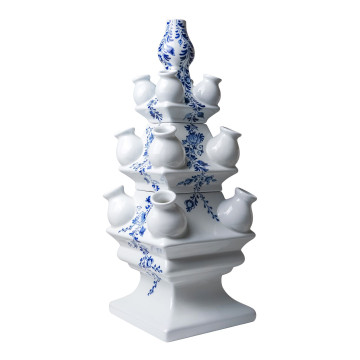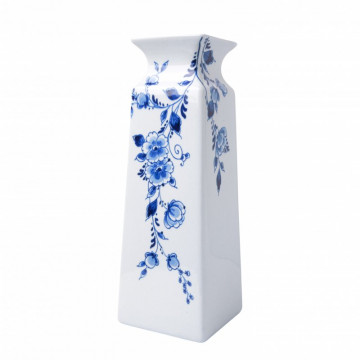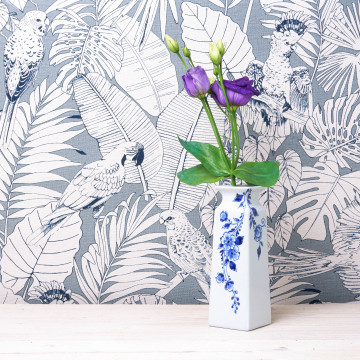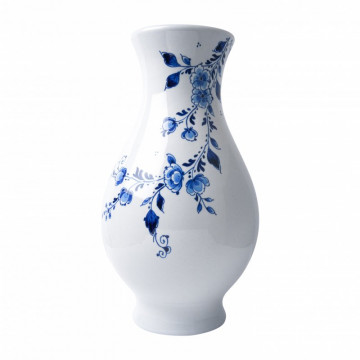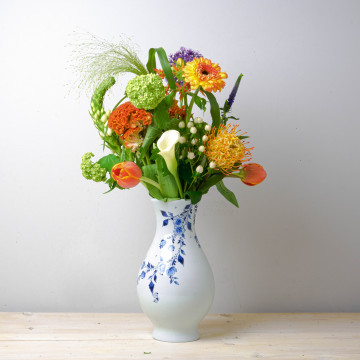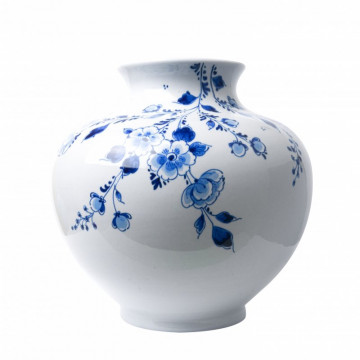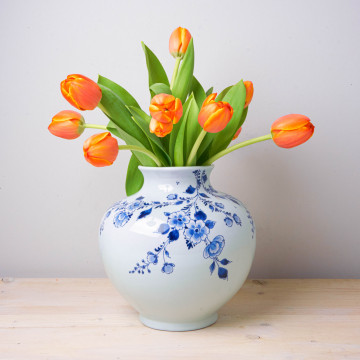
The craft that is Delft blue

Delft blue made with love
At a time when more and more fast techniques are being used in factories far away from here, we deliberately go back to where it all began. With time, attention and much knowledge of the product, making beautiful pure Delftware. Right here in the Netherlands. That is the essence of the Made-Lief collection. As the name suggests, it is a collection made with love and like the flower the daisy, Delft blue has become a national symbol for the Netherlands. All Delftware products in the Made-Lief collection are handmade in the authentic way that has been done for four hundred years.

How a Made-Lief vase is made:
1. From inspiration to creation
It all starts with inspiration. For the Made-Lief collection, we took our inspiration from traditional Delft blue floral decorations and shapes. Flowers and leaves are one of the oldest Delft blue decorations on porcelain. The idea is shaped through sketches on paper. Thus we explore the decorations, refine the shapes and so the concept slowly comes to life. Then a 3D design is made from the sketches. Our designer creates these digitally so that we can visualize the vases in detail, including dimensions and proportions.

2. Ceramic casting
Now that the design is complete, the making of the vase begins. We carefully compose our clay from more than ten different raw materials. When the clay is ready, it is poured into plaster molds. The molds are plaster because it is porous and it absorbs water from the clay. Because of this process, the clay dries slowly. The clay dries faster where it touches the plaster wall, creating a dry clay wall while the center remains liquid. After about half an hour, this clay wall is about 4 mm thick. We turn the mold over and let the still liquid clay in the middle drain out. This creates a hollow vase.


3. Painted by hand
Delft blue paint is actually black in color. This makes it extra challenging for the master painter to paint with. The paint is a composition of cobalt and copper oxide and is made by ourselves, according to our own recipe. During firing, the black color changes to the iconic Delft blue as the paint enters into a chemical reaction with the glaze. First, the master painter makes a pattern on the vase with a pencil or charcoal powder. Then the master painter traces the most important lines with a thin brush, after which the decoration is painted completely from scratch. No mistakes are allowed in this process, as the material is unforgiving. Once a brush stroke is made, it remains visible forever. Color difference and depth is applied by diluting the paint with water. This requires a tremendous amount of experience and insight.

4. The finished vase!
After painting, the vase is covered in a layer of glaze. This is done by hand to ensure that the glaze spreads evenly over the product. At this point in the process, the vase is completely white and nothing more of the painting is visible. Now the vase goes into the kiln. It is baked at a temperature of about 1200 degrees Celsius. During baking, the glaze melts and becomes transparent. The black color of the paint turns into the well-known Delft blue hue. After a process that takes days to make, the end result is finally ready: a beautiful, handmade Delft blue vase!
